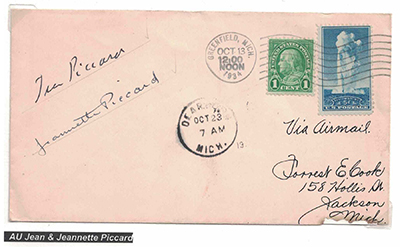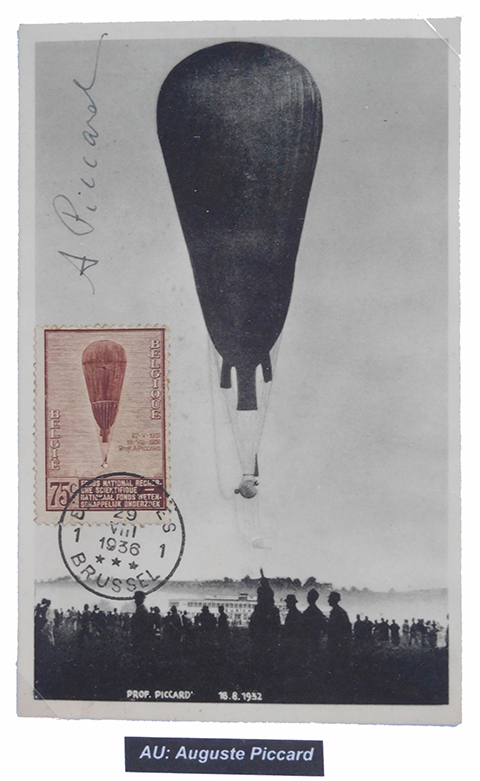Space Cover 669: Pioneering crewed balloon flightsAuguste Piccard (28 January 1884 – 24 March 1962) was a Swiss physicist, inventor and explorer known for his record-breaking hydrogen balloon flights, with which he studied the Earth's upper atmosphere. Astrophilately incorporates the pioneer crewed balloons that preceded rocket flights.
The first crewed balloon to exceed 50,000 feet was flown by Auguste Piccard in 1930. An interest in ballooning and a curiosity about the upper atmosphere led him to design a spherical, pressurized aluminum gondola that would allow ascent to a great altitude without requiring a pressure suit. Supported by the Belgian Fonds National de la Recherche Scientifique, Piccard constructed his gondola.
An important motivation for his research in the upper atmosphere was measurements of cosmic radiation, which were supposed to give experimental evidence for the theories of Albert Einstein, whom Piccard knew from the Solvay conferences and who was a fellow alumnus. The stamp on this postcard, and the photo, pictures his first crewed stratospheric flight. The postcard was cancelled on the date of his second stratospheric ascent.

The above cover was flown by Jean and Jeannette, as was her pet turtle.
After Thomas Settle's November, 1933 record flight in the "Century of Progress" balloon, it was given to Jean Piccard who was scheduled to man that flight, but was not licensed to fly it when he arrived in the U.S. to do so. Jean decided to fly it to the stratosphere. Jean concentrated on the science, while Jeannette piloted the balloon.
"She had a better chance of obtaining a pilot's license than Jean, who was preoccupied with restoring the gondola and balloon and convincing scientists to provide instruments to fly." As pilot, Jeannette became the holder of the women's altitude record of 57,579 feet for 29 years, and per several accounts, she was regarded as the first woman in space!













